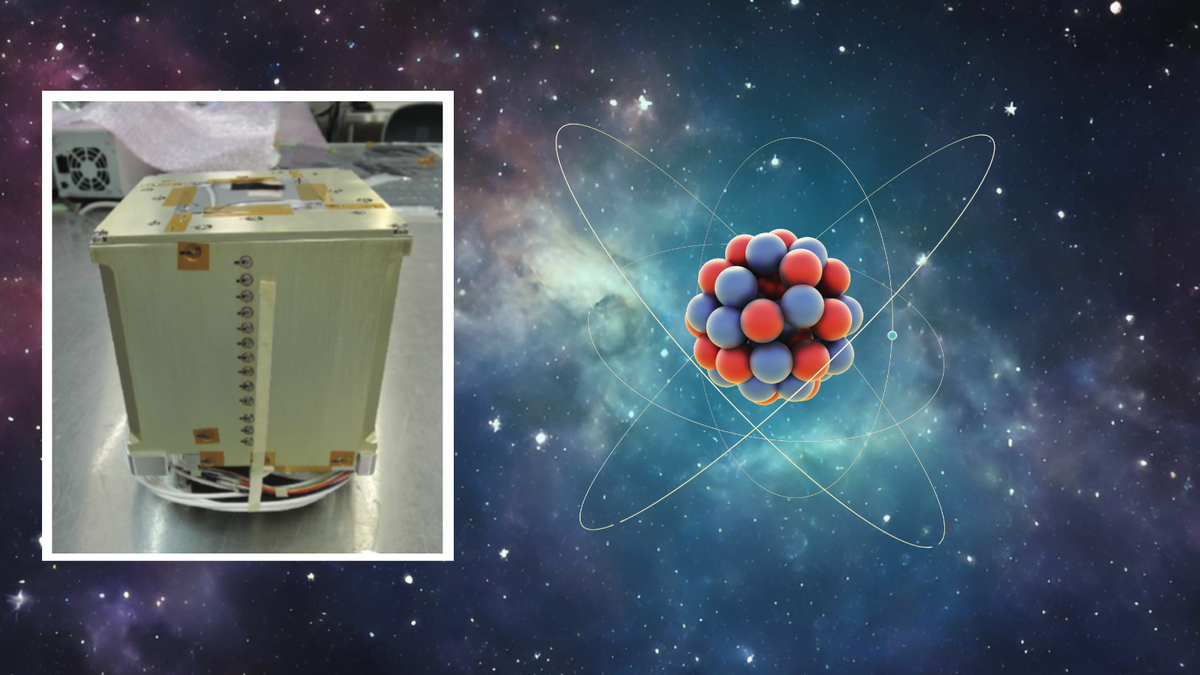Deep-space astronomy sensor peers into the heart of an atom
By Robert Lea published March 13, 2024
"Developed initially for space observations, the Compton Camera has now proven its worth as a tool for addressing complex scientific questions in other domains as well."

On the left is the Compton camera, originally designed to investigate the universe on cosmic scales. (Image credit: Robert Lea/RIKEN)
Scientists have taken an instrument originally designed to study huge celestial objects in the cosmos and repurposed it to investigate the world on an infinitely smaller scale. With this instrument, they managed to probe the heart of the atom.
The team wanted to understand quantum-scale changes that occur within unstable atoms, and realized there's a state-of-the-art gamma-ray polarimeter they could tap into. This device, known as a Compton camera, can measure the polarization of high-energy light waves. In other words, it can dissect what direction such high-energy light is orientated toward.
The only thing is, however, that this instrument was technically built for deep-space astronomy, not atomic investigations. In fact, scientists constructed it because they wanted to place it on the Hitomi satellite to make observations of high-energy cosmic processes. Yet, the camera has now proven its versatility. By capturing the polarization of gamma rays emitted from atomic nuclei rather than faraway galactic objects, it managed to reveal the internal structure of the atomic nucleus as well as any changes such nuclei may be undergoing.
Compton chemistry 101
Compton cameras are used to determine the direction and energy of gamma rays using a phenomenon called "Compton scattering."
More:
https://www.space.com/space-exploration/tech/deep-space-astronomy-sensor-peers-into-the-heart-of-an-atom
